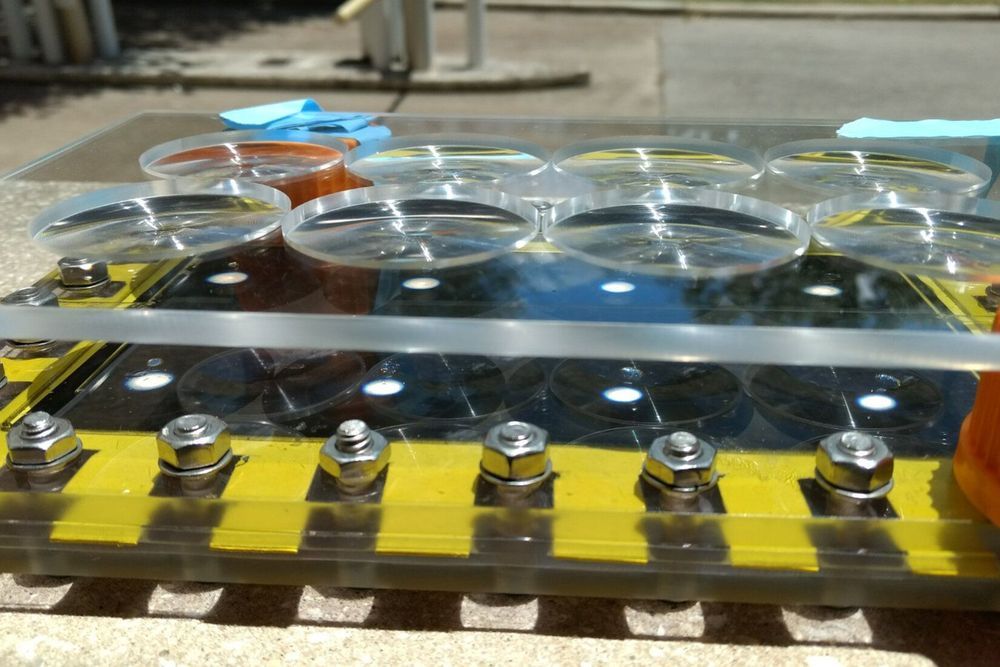Jun 19, 2019
Medicine dispensing innovation wins engineering prize
Posted by Genevieve Klien in categories: biotech/medical, engineering
Thanks to a new locker system for dispensing medicines, patients can now get their medicines in only 36 seconds.
Thanks to a new locker system for dispensing medicines, patients can now get their medicines in only 36 seconds.
Gunsalus agrees that the Sato case highlights some of the problems with misconduct investigations, and says that if shortcomings emerge, further reviews may be needed. She suggests institutional panels should include external members and that officials should also use a standardized checklist to strengthen their processes. “There should be some way for journals, funders, patients and others to be assured of the credibility and thoroughness of university reviews,” says Gunsalus.
Detailed analysis of misconduct investigations into huge research fraud suggests institutional probes aren’t rigorous enough.
Diet can influence the gut microbiome, but the same food can have the opposite effect on different people.
A key challenge for robotics researchers is developing systems that can interact with humans and their surrounding environment in situations that involve varying degrees of uncertainty. In fact, while humans can continuously learn from their experiences and perceive their body as a whole as they interact with the world, robots do not yet have these capabilities.
Researchers at the Technical University of Munich have recently carried out an ambitious study in which they tried to apply “active inference,” a theoretical construct that describes the ability to unite perception and action, to a humanoid robot. Their study is part of a broader EU-funded project called SELFCEPTION, which bridges robotics and cognitive psychology with the aim of developing more perceptive robots.
“The original research question that triggered this work was to provide humanoid robots and artificial agents in general with the capacity to perceive their body as humans do,” Pablo Lanillos, one of the researchers who carried out the study, told TechXplore. “The main goal was to improve their capabilities to interact under uncertainty. Under the umbrella of the Selfception.eu Marie Skłodowska-Curie project we initially defined a roadmap to include some characteristics of human perception and action into robots.”

Rice University’s solar-powered approach for purifying salt water with sunlight and nanoparticles is even more efficient than its creators first believed.
Researchers in Rice’s Laboratory for Nanophotonics (LANP) this week showed they could boost the efficiency of their solar-powered desalination system by more than 50% simply by adding inexpensive plastic lenses to concentrate sunlight into “hot spots.” The results are available online in the Proceedings of the National Academy of Sciences.
Continue reading “Engineers boost output of solar desalination system” »
Oh yes.
Robots that can rapidly plan out their movements could accelerate factory automation—and help keep fragile humans safe.
“Previously, bacteria were found using metagenomics or microbiome sequencing, and now we have confirmed that signal based on our ability to label the bacterial RNA with a florescent ‘tag’ and actually see them,” said Dr. Maxim Seferovic, instructor in obstetrics and gynecology at Baylor and lead author in the study. “We leveraged a powerful new imaging technology to add greater specificity in the signal of bacterial RNA, which helped us to see bacteria within the microarchitecture of the placental tissue.”
Researchers examined microbes in term and preterm gestations using a signal amplified 16S universal in situ hybridization probe designed for bacterial rRNA, along with several other histologic methods. Seferovic said the study was carefully designed to control for contamination as best as possible, so that these sparse bacteria could be accurately attributed to their location in the placenta.
“We did not see quantitative or numerical differences between preterm or full-term births, nor did we see them localizing to different substrata. But we do see differences in what genera of bacteria are there in preterm or full term, and this supported our and other’s past findings as well,” said Aagaard.
